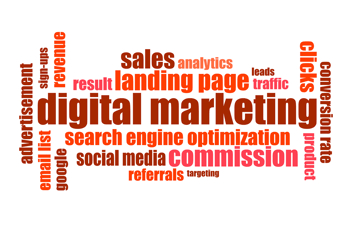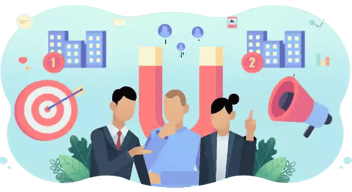Elevate your content with HubSpot Marketing Hub for content marketing. Discover how our strategies and HubSpot's tools drive success.
Inbound Methodologies for Law Firms
Whether you are just starting a new law firm or rethinking your marketing strategy, you may be considering the benefits of online marketing. While online marketing has existed for several years, internet marketing strategies are changing. Rather than using online marketing resources to reach potential customers, law firms and other businesses can use certain methodologies to draw customers in. This distinction is one of "outbound" versus “inbound" marketing. While specific outbound marketing strategies may still have appeal in particular markets or for specific firms, any twenty-first-century law firm needs to consider the benefits of inbound marketing. The following information is designed to provide you with some essential information about inbound marketing methodologies for law firms.
According to HubSpot, the inbound methodology has three significant elements: attracting, engaging, and delighting people. We'll give you more information about how to do each task and explain why they're essential for any law firm's inbound marketing strategy.
 Attracting Potential Clients
Attracting Potential Clients
One of the key aspects of inbound marketing is to draw in the appropriate audience for your online materials. You should create content that appeals to your target client or individual you wish to collaborate with. It's important to strategize your online marketing approach and ensure that those needing your legal services can easily find you. Attracting your ideal client requires careful consideration of various factors. The following are some key examples of ways you can attract the people who want your legal services and are seeking them out:
-
Crafting detailed buyer personas: When thinking about inbound marketing, you'll want to spend much time building buyer personas for your ideal visitors. Law firms may have multiple buyer personas—and often should have. When you craft a buyer persona, you'll want to think through everything about your ideal client. For instance, where does that client live, and how does that person's professional life intertwine with his or her social and cultural life? To what socioeconomic or sociocultural group does the person belong? Why is the person seeking legal services? For every imagined client you're targeting with online marketing, you'll want to think about buyer personas well in advance—your carefully curated content will only produce the desired result if you know whom you're making it for.
-
Using search engine optimization (SEO): There are many different elements of SEO, and some may require you to work with an experienced web designer. In short, though, SEO is what allows your online content to be found by potential visitors. It's how search engines like Google or Yahoo! see your pages in the first place and "crawl" them and how your online content ends up in Google search results when a potential client types keywords or key phrases into a search engine search bar.
-
Keywords and key phrases: While thinking about keywords and key phrases is part of SEO, keeping specific keywords and key phrases in mind in all the content you create is essential. While you may need outside assistance to ensure that your website or blog is being "crawled," it's in your control to ensure that specific keywords or key phrases end up in the online content you create.
-
Blogging: Creating a legal blog is crucial to bring potential visitors to your website and online content more broadly. You'll want to create a blogging calendar that allows you to stick to a regular publishing schedule, and you'll want to make sure your blog topics are tailored to your buyer personas.
 Engaging Online Visitors
Engaging Online Visitors
One of the most exciting objectives for every online business is to convert website visitors into potential customers and establish long-lasting relationships with them. To accomplish this, it is essential to craft informative and captivating content that motivates readers to take action, such as filling out a contact form, signing up for a newsletter, or sharing their email for regular blog updates. We are eager to help you achieve this goal and look forward to supporting your success. To engage and ultimately convert a visitor on your law firm's website into a client, you'll want to consider employing the following methods:
-
Use the "call to action" buttons on your website, at the bottom of your blog posts, and on other pages to ask your reader to take the next step. What should a "call to action" button say or do? It might ask the reader to request more information about a specific legal topic or issue, or it might ask the reader to request a consultation with your law firm.
-
Use a web form that asks the reader to enter his or her contact information to get help with a particular legal matter or question. It's usually best to keep these web forms brief so that a reader is not burdened when filling them out. You'll usually want to ask for a name, the best contact information (email or phone number), and a brief description of that person's legal question or concern.
-
Ask the reader to subscribe to blog updates or emails. If your readers like what they see on your blog, you can ask them to enter their email address into a pop-up button to subscribe.
Engaging online visitors and ultimately converting those visitors to leads is an essential practice for any law firm using online marketing and, specifically, inbound marketing strategies. Not only can information from visitors to your website provide you with contact information to get in touch with potential new clients, but it can also provide your law firm with data you can use to help tailor your blog posts and other online content even further. For example, you may get several web form submissions from visitors who have questions about a specific legal issue that you haven't yet addressed from a particular perspective on your blog. Adding a blog post or two to answer frequently asked questions from website visitors can build trust in your readership and gain additional website traffic from other internet searchers seeking the same information.
You Might Also Like This Post:
Delighting the Visitor
Once you've converted an online visitor into a lead (or you've turned the online visitor into a client), you want to do everything you can to delight that client so that they will promote your online content themselves. This theoretical person might share your blog posts on their social media accounts, such as Facebook or Twitter. Or they might direct other potential clients who require legal services to your website. For some law firms, one buyer persona might be a popular legal blog that can link to some of your content in that blog's online output.
For law firms in the 21st century, inbound marketing is an effective strategy for building your business and gaining clients at your firm. For many law firms, inbound marketing becomes an essential element of marketing the business in the present and for the future.
Find more information about the Inbound Methodology in our Guide to Law Firm Marketing.
This content is also available in:
- German: Inbound-Methoden für Anwaltskanzleien
- Spanish: Metodologías Inbound para despachos de abogados
- French: Méthodologies d'appels entrants pour les cabinets d'avocats
- Italian: Metodologie inbound per gli studi legali
- Romanian: Metodologii Inbound pentru firmele de avocatură
- Chinese: 面向律师事务所的入境方法









Leave a Comment